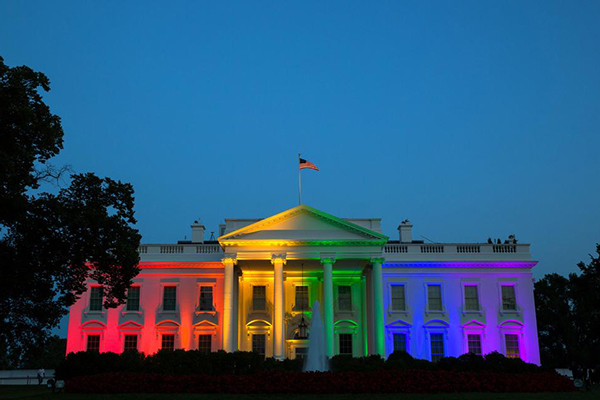Law professor on the Supreme Court ruling and what comes next

History was made Friday morning when, in a landmark decision for the gay rights movement, the Supreme Court ruled, 5-4, that same-sex marriage is a constitutional right.
When the court decided to consider the right to marry for same-sex couples, it sought answers to two questions. The first, argued successfully for the plaintiffs by Northeastern School of Law alumna Mary Bonauto, L’87, was do the “equal protections” guaranteed by the 14th Amendment mean same-sex couples should be allowed to wed? The second question was can a state refuse to recognize out-of-state same-sex marriages?

Northeastern School of Law alumna Mary Bonauto. Contributed photo
Prior to the ruling, 36 states allowed same-sex marriage. On Friday, the court made it an even 50, plus U.S. territories.
“No union is more profound than marriage, for it embodies the highest ideals of love, fidelity, devotion, sacrifice, and family,” Justice Anthony Kennedy wrote in the majority opinion. “In forming a marital union, two people become something greater than once they were.”
The court heard arguments on the issue in April, stemming from four separate cases at the state level.
Here, we asked School of Law professor Martha Davis, an expert on human rights and social justice issues, for her insight on this historic decision and what happens next.

School of Law professor Martha Davis.
Promoting inclusion
Friday’s ruling is a display of the expansion of the Supreme Court’s jurisprudence addressing human dignity and rights, Davis explained, an expansion that Justice Kennedy has been leading for the past 20 years.
“The majority opinion reaffirms our nation’s important traditions of promoting inclusion, ensuring equality, and protecting privacy,” Davis noted.
On the other side, Davis said the four dissenters’ opinions demonstrate there is “still a disagreement on those principles, including whether they are in the Constitution at all.”
What’s next?
“As of 9:59 a.m. on June 26, 14 states did not allow same-sex marriage. This decision supersedes their laws,” Davis said.
She pointed out that same-sex marriages were performed across the country moments after the ruling was issued. And while some jurisdictions may take a short time to update their forms, same-sex couples should now be able to marry anywhere in the U.S.
Unfortunately, Davis noted, some local counties have suggested they may stop offering marriages entirely as a way to avoid having to sanction same-sex marriages, similar to tactics used during the civil rights era when some public schools chose to close rather than integrate.
Multiple dissents
Among the four dissenters on the bench, each wrote his own opinion. Davis said this is not common, although it is not unheard of.
“Individual justices want to stake out their own theories of the case and when they are dissenting, there’s no reason to compromise on their reasoning in order to pull in another vote,” she said. “In this instance, it seemed that the justices also wanted to use their individual voices to multiply the impact of their dissents.”
A change in opinion
According to the Pew Research Center, opinion on same-sex marriage in the U.S. has shifted dramatically over the past 20 years, going from 65 percent against it in 1996 to 54 percent in favor of it in 2014. Davis attributed this reversal to a multi-faceted approach.
“The movement for marriage equality has been strategically brilliant in using grassroots organizing, media, public education, and law to support social change,” she said.
She added that law schools are already starting to study, and teach, the strategies Bonauto, GLAD (Gay and Lesbian Advocates & Defenders), and their many allies used in the case.





